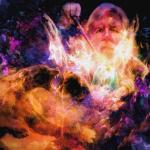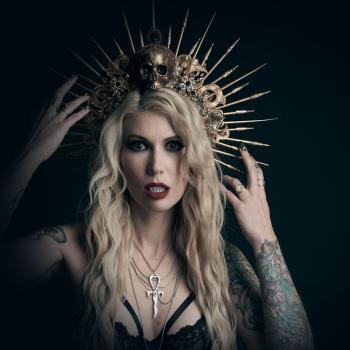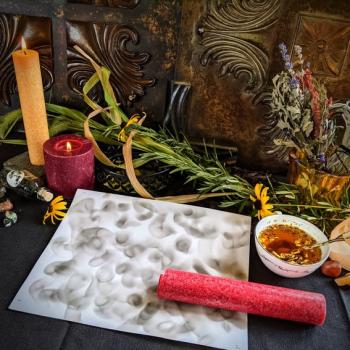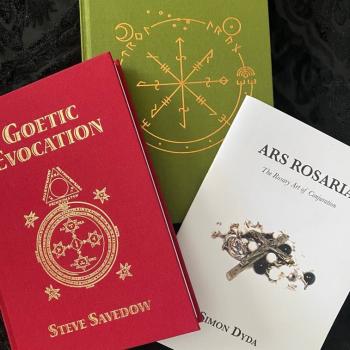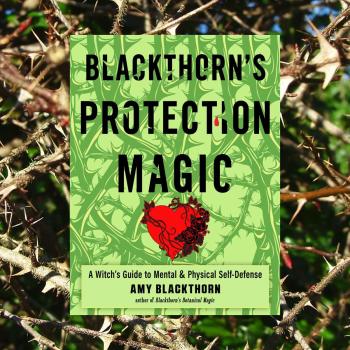Elder Spirits Surviving the Centuries
In traditional witchcraft we seek to emulate the rituals and wisdom of Witches who came before us. History has not been kind to followers of the Old Ways, and that is reflected by the form currently taken by the patron of our Arte. I think the idea of a single-unbroken chain of wisdom or tradition of practice that has been passed on throughout the ages is an idea that we as modern practitioners can finally put to bed. Even modern Christianity would be almost unrecognizable to 1st Century Christians. Certain practices survive because they resonate with something primal and ancient within us. This is why there are so many similarities across indigenous spiritual practices separated by time and distance. They have connected with the living force of the land and its cycles, and through their rituals they embody those cycles and partake of their blessings. The basic rituals of seasonal progression as well as the rites of passage that we experience over out lifetimes survive cross-culturally because of their inherent truth. They are a reflection and celebration of things already occurring in Nature. These practices weren’t invented per se, they simply arose from ancient man’s interaction with his environment and the unseen forces dominating his life.
As a modern Pagan, polytheist and practitioner of magical artes; the nature of divinity and its manifestations has been of utmost importance to my metaphysical philosophy. Understanding how these forces have manifest and transformed over time helps us to better grasp their currents roles in our practice. But what is this obscure concept of “the Divine,” and is it really useful to us?
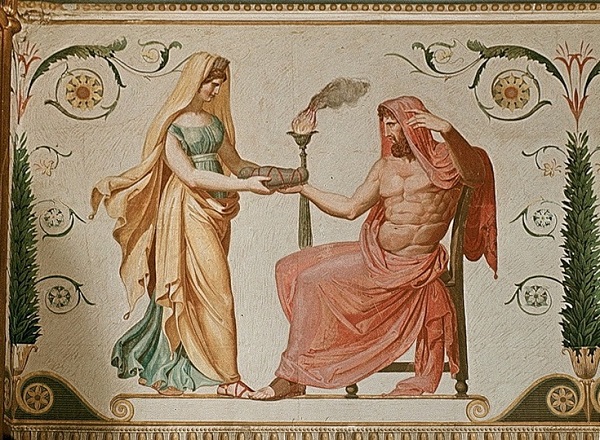 Cronos and Rhea. Wikimedia Commons.
Cronos and Rhea. Wikimedia Commons.
A deity or divinity, what most people would call a god or goddess, is a spirit or force just like any other spirit. A spirit at its most basic of parts, is a concentration of Will capable of taking an infinite number of forms. This is not the same as an archetype or an idea but an actual conscious force that is present with or without humanity. The names, the symbols and the myths; these are the archetypes or the ideas that convey an understanding of the forces behind them. The particular cultural identity given to these forces acts as a container for their vast energy, their Will. Through the personification of these forces and the stories that have grown up around them, we are better able to resonate with and internalize their particular currents. This is evident in some of the most primal mythologies, especially the myths of elder gods that embody the creative and destructive forces of the Universe.
Many of these deities over time have become associated with nature, magic and the hidden knowledge of the spirit world. These are the often the same divinities that brought the classical arts to mankind, and consequently they have become debased or demonized by the dominant force of the early Christian Church. Although this transformation only adds additional layers of folk lore to their mythos carrying them into the next generation. When it comes to the origins of Western Esoteric traditions the pantheons of ancient Greece and Rome were the most influential for a number of reasons.
Saturnian and Mercurial Aspects of the Horned One
However there are cultures far older that existed before the forefathers of Western Civilization, and also those tribal peoples who lived for thousands of years hidden in the dark forests of Europe and the British Isles. Perhaps it is only because of their success in politics and military conquest that their mythology is so deeply ingrained in Western culture. The great civilizations of ancient Mesopotamia and the tribal peoples of Western Europe existed long before there were Greek and Roman scholars to write about them. When we look to the darkest depths of history, those details lost to memory, we find evidence of something older that has been kept hidden-a sort of Universal knowledge stored within our mythology. Perhaps it is the current of the craft itself that wants to keep itself hidden in the shadows. The Gatekeepers of the Otherworld, the gods of magic, those who traffic in life and death are the keepers of this hidden current. Those of us with the ability to sense the subtle forces around us are capable of putting all the pieces together, guided by unseen hands along the way.
This mysterious force couldn’t be more evident than in the figure of the Witch Father of classical witchcraft tradition, also known as the Horned One or Old One. He is the spirit informing our work and leading us along the Crooked Path. He has gone by many names and has taken many forms. He is none and all of these things at the same time. He is the force or current that links us together by virtue of our nature, in the same way that it connects the many guises worn by the patrons of our arte. By nature he is a trickster and a shape shifter, his forms having different aspects, whether Saturnian, Mercurial or Cthonic. A spirit of such depth and antiquity that it cannot be pinpointed to one name or pantheon. The scope of the spirit can only be truly appreciated through an incorporation of all the various facets that make such a complex power. Connections can be found historically, linguistically, and symbolically between the indigenous land spirits of a place, various tutelary deities of a promethean or initiatory nature and the intermediary spirits that travel between the worlds.
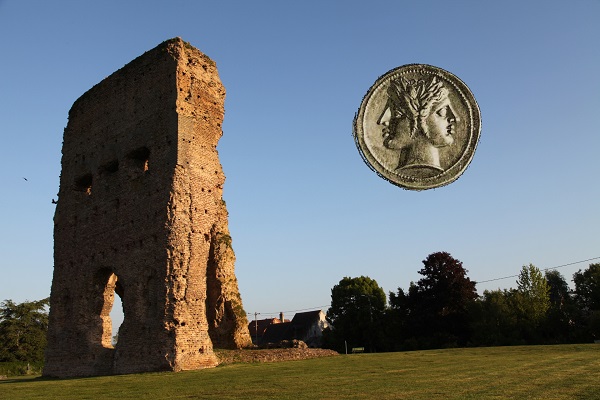 Autun Temple Janus. Wikimedia Commons.
Autun Temple Janus. Wikimedia Commons.
The Connection Between Saturn and Janus
A perfect example of this connection can be seen in the relationship between the mythology of the Titan Saturn, his Greek counterpart Kronos has some interesting parallels with the current of traditional witchcraft. It is also interesting to explore the relationship between the more respected Saturn of the ancient world and the indigenous figure Janus. It is in this older figure of the god Saturn that we discover his connections to the horned god of nature before medieval astrologers named the planet the Greater Malefic. Saturn reigned during a time known as the Golden Age of Latium, it was during this utopian period that he was known as a deity of agriculture and the bounty of the Earth. He was less highly regarded by the Greeks who viewed him as a crude and cruel deity which likely had to do with his rivalry with his son Zeus.
Kronos, jealous of his father’s power, overthrew the Uranic ruler, a common theme in mythology. It was prophesied that he would meet the same fate which led to him swallowing his children, the Olympians. This theme is repeated in Pagan mythology where the old god is overthrown by the new, heralding in a new age. As a god of the harvest the Kronia was held in his honor. The festival occurred at the beginning of August which echoes the similar harvest festival Lugnassadh of the Celts. It is during his transition from Kronos to Saturn in Roman mythology that we begin to see other interesting parallels.
In ancient Roman religion, Saturn was seen in a more positive light, and was often conflated with indigenous deities and seen as one of Rome’s own. Although some myths depict him as an immigrant deity he had been on Roman soil for such a long time this was often forgotten. Some sources say that he reigned alongside Janus on Mons Saturnius, the site of Rome before its founding. It was during his rule that humans enjoyed the fruits of the earth without labor. To the ancient Romans, Saturn was a god of generation, dissolution, plenty, wealth, agriculture, periodic renewal and liberation. His dual aspects can also be seen in his two consorts, Ops; goddess of wealth, abundance and resources, and Lua; goddess of destruction and dissolution. At its most primal level, Saturn embodies the power of the cyclical courses of the seasons. This interesting partnership between Saturnian and Mercurial forces in the god Janus, shows yet another aspect of the strange forces underlying our practice.
Autocthones Resident Deities
The ancient Greeks had a concept known as autocthones. These were people who sprung from the earth itself, they had no country of origin because they had always been there. There are accounts that relate to Saturn’s status as an immigrant deity in Roman religion, but there is also evidence of his early presence in both Greek and Roman sources. His origins can be traced back to indigenous Indo-European sources, such as the Etruscans who had a deity called Satre. This was a dark deity of the northwestern regions who hurled lightning from his domain in the Earth.
In regards to Janus, the Romans claimed him as there own, calling him also “Bifrons” meaning two-faced. Although there is evidence of other two-faced deities in older Sumerian and Babylonian myth. Janus is the ruler of gateways, duality, time, and doorways. He is a god of change and initiation. He governs the movements of the Sun, Moon and Stars, as well as the movements of the gods. He is always called first to begin rituals as the opener of the way. Due to his cyclical and intermediary nature he is worshipped at planting and harvest times. The idea that Saturn taught Janus and the Romans the art of agriculture in return for sharing his kingdom is an intriguing way that myth has connected these spirits.
The connections between these deities only scratches the surface of the many facets of the Old One. These spirits serve as starting points for further exploration as one will find further connections between the many horned gods of nature and the various mercurial and initiatory spirits of their respective traditions.

